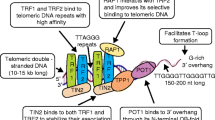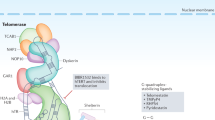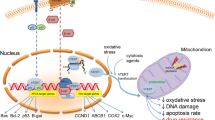Abstract
This review will focus on the clinical utilities of telomerase for human cancer diagnosis and prognosis. Much attention has been focused on control of telomerase activity in early and late stage tumours. Telomerase stabilisation may be required for cells to escape replicative senescence and to proliferate indefinitely. Because of a very strong association between telomerase and malignancy, both clinicians and pathologists expect this molecule to be a useful diagnostic and prognostic marker and a new therapeutic target. These data have greatly inspired the development of various strategies to target telomere and telomerase for cancer therapy. Finally, evidence is now emerging that G-quadruplex ligands produce rapid senescence and selective cell death. A summary of recent experimental works with new small molecules as potential inhibitors of telomerase is presented.
Similar content being viewed by others
Author information
Authors and Affiliations
Additional information
*Supported by an unrestricted educational grant from Pfizer.
Rights and permissions
About this article
Cite this article
Sampedro Camarena, F., Cano Serral, G. & Sampedro Santaló, F. Telomerase and telomere dynamics in ageing and cancer: current status and future directions. Clin Transl Oncol 9, 145–154 (2007). https://doi.org/10.1007/s12094-007-0028-1
Issue Date:
DOI: https://doi.org/10.1007/s12094-007-0028-1




